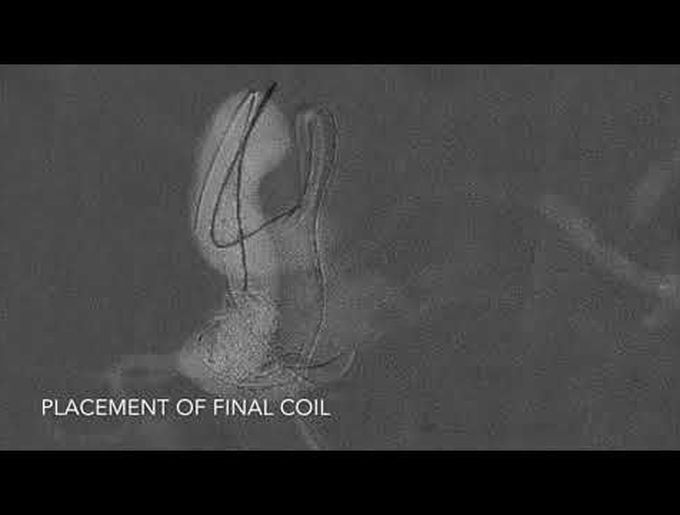


Embolization of a large lumbar type A epidural arteriovenous fistula
We present a 54-year-old gentleman with a 1-month history of progressive paraparesis, loss of sphincter control, and sexual dysfunction. Spinal MRI demonstrated severe spinal cord edema and abnormal epidural and subarachnoid enlarged vessels. Spinal angiogram confirmed the presence of a very large type A epidural arteriovenous fistula (eAVF) arising from the L4 radicular artery. The fistula was obliterated with coils and Onyx. Two-month follow-up MRI showed resolution of spinal cord edema and abnormal vessels, and the patient experienced complete resolution of symptoms. Due to the possibility of recurrence, the patient will be followed with serial MRI/MRA at 6 months and 1, 2, and 5 years. Lorenzo Rinaldo, MD, PhD,1 Harry J. Cloft, MD, PhD,2 Giuseppe Lanzino, MD,1,2 and Leonardo Rangel-Castilla, MD1,2 Departments of 1Neurosurgery and 2Radiology, Mayo Clinic, Rochester, Minnesota

